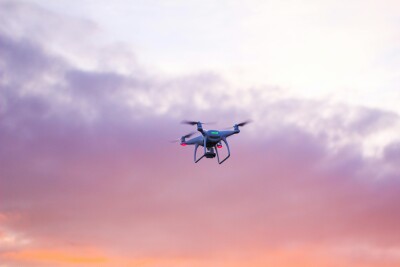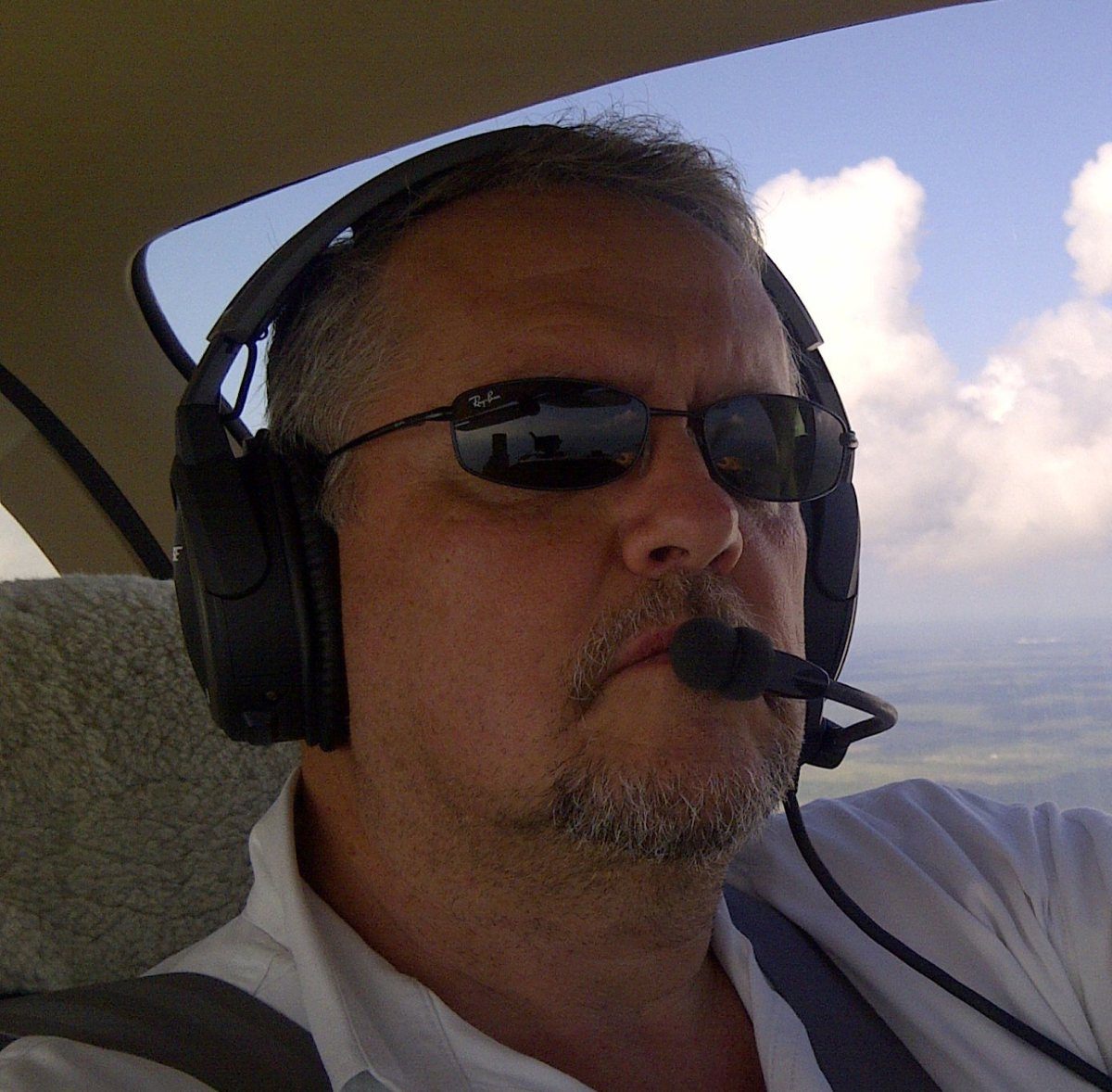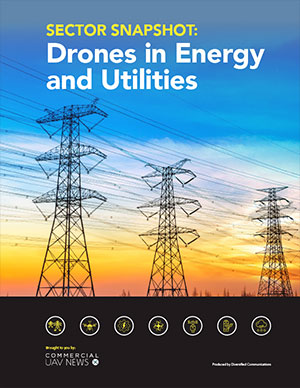 Disruptive UAS Technology Poised To Help U.S. Offshore Wind Energy Industry Forge Ahead
Disruptive UAS Technology Poised To Help U.S. Offshore Wind Energy Industry Forge AheadOne of the core benefits of UAS technology (and unmanned technology generally such as ground, water surface and subsurface unmanned vehicles) is that it is much safer to operate and more economical and efficient than the traditional manned vehicles used to carry out necessary and critical missions that by their nature are unsafe. Manned vehicles such as airplanes or helicopters are much more dangerous and expensive to operate and maintain and also require a high level of logistical communications, coordination and time before they can be deployed. By comparison, deployment of UAS technology dramatically mitigates human safety risk since no one is actually on board and unmanned aircraft are more readily portable allowing for a much more timely and inexpensive deployment in unsafe conditions or emergency situations. UAS technology is already being utilized for an incredibly wide array of industries and professions including fire management, real estate services, post-storm and disaster assessments, bridges, pipelines, powerlines, energy generation facilities and other critical infrastructure inspections, construction activities, mining, precision agriculture, cultural resource inventory, various environmental/wildlife surveys, assessments and monitoring activities, search & rescue missions, first responders and law enforcement operations.
The U.S. offshore wind energy industry is taking its very first step and going forward will be well positioned to take advantage of the quickly expanding UAS technology and the endless applications that can help reduce the installation costs of offshore wind development projects. From pre-construction surveys, minimizing risk liability for compliance with the Endangered Species Act and Marine Mammal Protection Act to post-construction operation and maintenance inspections, the incorporation of UAS technology will allow for a safer, more efficient undertaking of activities and tasks that will help protect a project’s bottom line and ultimately the marketability of its wind energy product.
For example, UAS technology can be deployed to assist in various pre-construction surveys (seasonal wildlife utilization) of Outer Continental Shelf (OCS) blocks for a proposed leasing area. UAS technology can help avoid impacts to the North Atlantic right whale which is listed as an endangered species and protected under the Endangered Species Act (ESA) and the Marine Mammal Protection Act (MMPA) as well as other listed species (other marine mammal and sea turtle species). On January 27, 2016, the critical habitat previously designated (1994) for the North Atlantic right whale was significantly expanded in its northeast feeding area and in its southeast calving area. The National Marine Fisheries Service (NMFS) within the National Oceanic Atmospheric Administration (NOAA) has already designated Seasonal Management Areas (SMAs) for regions along the Atlantic seaboard (Northeast, Mid-Atlantic and Southeast) to protect against vessel- right whale strikes in areas where this whale species is known to seasonally feed, migrate and rear calves. Within the SMAs vessel speeds are restricted to 10 knots or less. 50 CFR 224.105. Federal regulations also require vessels to maintain a separation distance of 500 yards (460 m) from a right whale and to implement avoidance measures if within the prohibited distance. 50 CFR 224.103(c). The North Atlantic right whale SMA vessel speed restrictions and separation distance requirements are also set forth in BOEM’s Addendum “C” Standard Operating Conditions as part of the OCS Lease instrument that lessees are required to comply with. In addition to the North Atlantic right whale, BOEM’s Addendum “C” Standard Operating Conditions also imposes upon an OCS lessee vessel separation distance restrictions for other whale species and listed sea turtle species. UAS technology can be a used as an innovative and efficient tool to help detect listed species such as the North Atlantic right whale and then coordinate vessel avoidance measures.
Going another step further for nighttime vessel operations (and presuming you have been issued an FAA certificate of waiver for small UAS operations at night), UAS technology already exist that enables a small unmanned aircraft to be equipped with a payload consisting of a thermal imaging sensor that can be used for detection of heat signatures (whales and other species) at the water surface. There will be a lot of vessel traffic out and back to offshore wind lease sites so being able to easily maintain vessel separation distance means vessel strikes are much less likely to occur which keeps a lessee in compliance with BOEM’s OCS Addendum “C” Standard Operating Conditions and ultimately avoids ESA/MMPA liabilities regarding impacts to North Atlantic right whales and other listed species. UAS technology can also benefit offshore wind development in other new ways. During construction phases UAS technology can serve as an eye in the sky to provide the zoom in or zoom out monitoring of construction activities (tower, nacelle or blade installations) in real time. This may be useful for better coordination of construction task sequencing or identifying potential flaws in construction materials and better assessing safety conditions for construction workers to avoid and minimize accidents/injuries offshore.
As offshore wind developments are constructed and come online there will be a need to conduct operation and maintenance through their lifespan. UAS technology already is building a positive track record for conducting inspections of land-based critical infrastructure from railroads, pipelines, bridges, industrial sites, power lines, cell towers and on-shore wind farms which allows a more efficient and strategic assessment of O&M needs without risking human safety. This same efficiency can easily be captured and applied to the up and coming U.S. offshore wind energy projects. The U.S. offshore wind energy industry has spread its wings to take flight and with its growing UAS Industry contemporary will soar to the greatest heights.
 Small UAS Cleared For TakeoffThe FAA’s final rule for small UAS (commonly referred to as “Part 107” since the FAA added a new part 107 to Title 14 Code of Federal Regulations) has streamlined the regulatory requirements in order to more meaningfully integrate small UAS into the NAS. One of the major previous burdens that the small UAS rule has now removed was the requirement that a person seeking to operate a small UAS for commercial purposes had to have obtained a manned aircraft pilot license (at least a sport or private pilot’s license) which could easily be an expensive and time-consuming endeavor to achieve. Instead, under the small UAS rule a person commercially operating a small unmanned aircraft must be at least 16 years old and hold either a remote pilot airman certificate with a small UAS rating or be under the direct supervision of someone else who holds a remote pilot certificate. In order to qualify for a remote pilot certificate one would have to pass an initial aeronautical knowledge exam at an approved FAA testing center or hold an existing part 61 pilot certificate and complete a small UAS online training course provided by the FAA. While the FAA rule opens up tremendous small UAS commercial application opportunities that will in turn further generate significant job creation and economic impact, there are however, operational limitations that need to be carefully observed in order to comply with the new small UAS rule.Some of the key limitations include that the unmanned aircraft, including its payload (cameras and other data sensors that are installed) must weigh less than 55 lbs. The small unmanned aircraft must be operated within the visual line-of-sight (VLOS) of the remote pilot in command. In other words, a remote pilot in command may not operate his or her small unmanned aircraft beyond the visual line-of-sight (BVLOS). Small unmanned aircraft may not operate over any persons not directly participating in the operation, not under a covered structure, and not in a covered stationary vehicle. Small unmanned aircraft can only be operated in daylight or civil twilight (30 minutes before official sunrise to 30 minutes after official sunset, local time) with appropriate anti-collision lighting. The maximum ground speed for a small unmanned aircraft is 100 mph (87 knots). Maximum altitude for a small unmanned aircraft is 400 feet above ground level (AGL), or if higher than 400 feet AGL, the small unmanned aircraft remains within 400 feet of a structure. A minimum weather visibility of 3 miles from the remote pilot’s control station. Operations from a moving vehicle are prohibited unless the operation is over a sparsely populated area. A remote pilot in command is required to conduct preflight inspections before commencing a mission. Importantly, the FAA has allowed for some potential flexibility for a remote pilot in command’s compliance with these requirements by acknowledging in the rule that the operational restrictions “are waivable if the applicant demonstrates that his or her operation can safely be conducted under the terms of a certificate of waiver.” Thus, if a remote pilot in command sees a need to conduct small UAS operations at night or perhaps BVLOS then a waiver of the daylight and VLOS restrictions can be requested of the FAA.However, the FAA’s issuance of the requested waiver will depend on whether it has been demonstrated that deviation from the subject operation limitation can be conducted safely. The FAA’s new Part 107 rule is applicable for UAS operations extending out to 12 nautical miles (13.8 miles) from the U.S. coast. For civil UAS operations beyond the U.S. territorial sea limit an operator will need to comply with International Standards, Annex 2-Rules of the Air to the Convention on International Civil Aviation and certain provisions of 14 CFR 91, in particular 14 CFR 91.703.
Small UAS Cleared For TakeoffThe FAA’s final rule for small UAS (commonly referred to as “Part 107” since the FAA added a new part 107 to Title 14 Code of Federal Regulations) has streamlined the regulatory requirements in order to more meaningfully integrate small UAS into the NAS. One of the major previous burdens that the small UAS rule has now removed was the requirement that a person seeking to operate a small UAS for commercial purposes had to have obtained a manned aircraft pilot license (at least a sport or private pilot’s license) which could easily be an expensive and time-consuming endeavor to achieve. Instead, under the small UAS rule a person commercially operating a small unmanned aircraft must be at least 16 years old and hold either a remote pilot airman certificate with a small UAS rating or be under the direct supervision of someone else who holds a remote pilot certificate. In order to qualify for a remote pilot certificate one would have to pass an initial aeronautical knowledge exam at an approved FAA testing center or hold an existing part 61 pilot certificate and complete a small UAS online training course provided by the FAA. While the FAA rule opens up tremendous small UAS commercial application opportunities that will in turn further generate significant job creation and economic impact, there are however, operational limitations that need to be carefully observed in order to comply with the new small UAS rule.Some of the key limitations include that the unmanned aircraft, including its payload (cameras and other data sensors that are installed) must weigh less than 55 lbs. The small unmanned aircraft must be operated within the visual line-of-sight (VLOS) of the remote pilot in command. In other words, a remote pilot in command may not operate his or her small unmanned aircraft beyond the visual line-of-sight (BVLOS). Small unmanned aircraft may not operate over any persons not directly participating in the operation, not under a covered structure, and not in a covered stationary vehicle. Small unmanned aircraft can only be operated in daylight or civil twilight (30 minutes before official sunrise to 30 minutes after official sunset, local time) with appropriate anti-collision lighting. The maximum ground speed for a small unmanned aircraft is 100 mph (87 knots). Maximum altitude for a small unmanned aircraft is 400 feet above ground level (AGL), or if higher than 400 feet AGL, the small unmanned aircraft remains within 400 feet of a structure. A minimum weather visibility of 3 miles from the remote pilot’s control station. Operations from a moving vehicle are prohibited unless the operation is over a sparsely populated area. A remote pilot in command is required to conduct preflight inspections before commencing a mission. Importantly, the FAA has allowed for some potential flexibility for a remote pilot in command’s compliance with these requirements by acknowledging in the rule that the operational restrictions “are waivable if the applicant demonstrates that his or her operation can safely be conducted under the terms of a certificate of waiver.” Thus, if a remote pilot in command sees a need to conduct small UAS operations at night or perhaps BVLOS then a waiver of the daylight and VLOS restrictions can be requested of the FAA.However, the FAA’s issuance of the requested waiver will depend on whether it has been demonstrated that deviation from the subject operation limitation can be conducted safely. The FAA’s new Part 107 rule is applicable for UAS operations extending out to 12 nautical miles (13.8 miles) from the U.S. coast. For civil UAS operations beyond the U.S. territorial sea limit an operator will need to comply with International Standards, Annex 2-Rules of the Air to the Convention on International Civil Aviation and certain provisions of 14 CFR 91, in particular 14 CFR 91.703. Disruptive UAS Technology Poised To Help U.S. Offshore Wind Energy Industry Forge AheadOne of the core benefits of UAS technology (and unmanned technology generally such as ground, water surface and subsurface unmanned vehicles) is that it is much safer to operate and more economical and efficient than the traditional manned vehicles used to carry out necessary and critical missions that by their nature are unsafe. Manned vehicles such as airplanes or helicopters are much more dangerous and expensive to operate and maintain and also require a high level of logistical communications, coordination and time before they can be deployed. By comparison, deployment of UAS technology dramatically mitigates human safety risk since no one is actually on board and unmanned aircraft are more readily portable allowing for a much more timely and inexpensive deployment in unsafe conditions or emergency situations. UAS technology is already being utilized for an incredibly wide array of industries and professions including fire management, real estate services, post-storm and disaster assessments, bridges, pipelines, powerlines, energy generation facilities and other critical infrastructure inspections, construction activities, mining, precision agriculture, cultural resource inventory, various environmental/wildlife surveys, assessments and monitoring activities, search & rescue missions, first responders and law enforcement operations.The U.S. offshore wind energy industry is taking its very first step and going forward will be well positioned to take advantage of the quickly expanding UAS technology and the endless applications that can help reduce the installation costs of offshore wind development projects. From pre-construction surveys, minimizing risk liability for compliance with the Endangered Species Act and Marine Mammal Protection Act to post-construction operation and maintenance inspections, the incorporation of UAS technology will allow for a safer, more efficient undertaking of activities and tasks that will help protect a project’s bottom line and ultimately the marketability of its wind energy product.For example, UAS technology can be deployed to assist in various pre-construction surveys (seasonal wildlife utilization) of Outer Continental Shelf (OCS) blocks for a proposed leasing area. UAS technology can help avoid impacts to the North Atlantic right whale which is listed as an endangered species and protected under the Endangered Species Act (ESA) and the Marine Mammal Protection Act (MMPA) as well as other listed species (other marine mammal and sea turtle species). On January 27, 2016, the critical habitat previously designated (1994) for the North Atlantic right whale was significantly expanded in its northeast feeding area and in its southeast calving area. The National Marine Fisheries Service (NMFS) within the National Oceanic Atmospheric Administration (NOAA) has already designated Seasonal Management Areas (SMAs) for regions along the Atlantic seaboard (Northeast, Mid-Atlantic and Southeast) to protect against vessel- right whale strikes in areas where this whale species is known to seasonally feed, migrate and rear calves. Within the SMAs vessel speeds are restricted to 10 knots or less. 50 CFR 224.105. Federal regulations also require vessels to maintain a separation distance of 500 yards (460 m) from a right whale and to implement avoidance measures if within the prohibited distance. 50 CFR 224.103(c). The North Atlantic right whale SMA vessel speed restrictions and separation distance requirements are also set forth in BOEM’s Addendum “C” Standard Operating Conditions as part of the OCS Lease instrument that lessees are required to comply with. In addition to the North Atlantic right whale, BOEM’s Addendum “C” Standard Operating Conditions also imposes upon an OCS lessee vessel separation distance restrictions for other whale species and listed sea turtle species. UAS technology can be a used as an innovative and efficient tool to help detect listed species such as the North Atlantic right whale and then coordinate vessel avoidance measures.Going another step further for nighttime vessel operations (and presuming you have been issued an FAA certificate of waiver for small UAS operations at night), UAS technology already exist that enables a small unmanned aircraft to be equipped with a payload consisting of a thermal imaging sensor that can be used for detection of heat signatures (whales and other species) at the water surface. There will be a lot of vessel traffic out and back to offshore wind lease sites so being able to easily maintain vessel separation distance means vessel strikes are much less likely to occur which keeps a lessee in compliance with BOEM’s OCS Addendum “C” Standard Operating Conditions and ultimately avoids ESA/MMPA liabilities regarding impacts to North Atlantic right whales and other listed species. UAS technology can also benefit offshore wind development in other new ways. During construction phases UAS technology can serve as an eye in the sky to provide the zoom in or zoom out monitoring of construction activities (tower, nacelle or blade installations) in real time. This may be useful for better coordination of construction task sequencing or identifying potential flaws in construction materials and better assessing safety conditions for construction workers to avoid and minimize accidents/injuries offshore.As offshore wind developments are constructed and come online there will be a need to conduct operation and maintenance through their lifespan. UAS technology already is building a positive track record for conducting inspections of land-based critical infrastructure from railroads, pipelines, bridges, industrial sites, power lines, cell towers and on-shore wind farms which allows a more efficient and strategic assessment of O&M needs without risking human safety. This same efficiency can easily be captured and applied to the up and coming U.S. offshore wind energy projects. The U.S. offshore wind energy industry has spread its wings to take flight and with its growing UAS Industry contemporary will soar to the greatest heights.
Disruptive UAS Technology Poised To Help U.S. Offshore Wind Energy Industry Forge AheadOne of the core benefits of UAS technology (and unmanned technology generally such as ground, water surface and subsurface unmanned vehicles) is that it is much safer to operate and more economical and efficient than the traditional manned vehicles used to carry out necessary and critical missions that by their nature are unsafe. Manned vehicles such as airplanes or helicopters are much more dangerous and expensive to operate and maintain and also require a high level of logistical communications, coordination and time before they can be deployed. By comparison, deployment of UAS technology dramatically mitigates human safety risk since no one is actually on board and unmanned aircraft are more readily portable allowing for a much more timely and inexpensive deployment in unsafe conditions or emergency situations. UAS technology is already being utilized for an incredibly wide array of industries and professions including fire management, real estate services, post-storm and disaster assessments, bridges, pipelines, powerlines, energy generation facilities and other critical infrastructure inspections, construction activities, mining, precision agriculture, cultural resource inventory, various environmental/wildlife surveys, assessments and monitoring activities, search & rescue missions, first responders and law enforcement operations.The U.S. offshore wind energy industry is taking its very first step and going forward will be well positioned to take advantage of the quickly expanding UAS technology and the endless applications that can help reduce the installation costs of offshore wind development projects. From pre-construction surveys, minimizing risk liability for compliance with the Endangered Species Act and Marine Mammal Protection Act to post-construction operation and maintenance inspections, the incorporation of UAS technology will allow for a safer, more efficient undertaking of activities and tasks that will help protect a project’s bottom line and ultimately the marketability of its wind energy product.For example, UAS technology can be deployed to assist in various pre-construction surveys (seasonal wildlife utilization) of Outer Continental Shelf (OCS) blocks for a proposed leasing area. UAS technology can help avoid impacts to the North Atlantic right whale which is listed as an endangered species and protected under the Endangered Species Act (ESA) and the Marine Mammal Protection Act (MMPA) as well as other listed species (other marine mammal and sea turtle species). On January 27, 2016, the critical habitat previously designated (1994) for the North Atlantic right whale was significantly expanded in its northeast feeding area and in its southeast calving area. The National Marine Fisheries Service (NMFS) within the National Oceanic Atmospheric Administration (NOAA) has already designated Seasonal Management Areas (SMAs) for regions along the Atlantic seaboard (Northeast, Mid-Atlantic and Southeast) to protect against vessel- right whale strikes in areas where this whale species is known to seasonally feed, migrate and rear calves. Within the SMAs vessel speeds are restricted to 10 knots or less. 50 CFR 224.105. Federal regulations also require vessels to maintain a separation distance of 500 yards (460 m) from a right whale and to implement avoidance measures if within the prohibited distance. 50 CFR 224.103(c). The North Atlantic right whale SMA vessel speed restrictions and separation distance requirements are also set forth in BOEM’s Addendum “C” Standard Operating Conditions as part of the OCS Lease instrument that lessees are required to comply with. In addition to the North Atlantic right whale, BOEM’s Addendum “C” Standard Operating Conditions also imposes upon an OCS lessee vessel separation distance restrictions for other whale species and listed sea turtle species. UAS technology can be a used as an innovative and efficient tool to help detect listed species such as the North Atlantic right whale and then coordinate vessel avoidance measures.Going another step further for nighttime vessel operations (and presuming you have been issued an FAA certificate of waiver for small UAS operations at night), UAS technology already exist that enables a small unmanned aircraft to be equipped with a payload consisting of a thermal imaging sensor that can be used for detection of heat signatures (whales and other species) at the water surface. There will be a lot of vessel traffic out and back to offshore wind lease sites so being able to easily maintain vessel separation distance means vessel strikes are much less likely to occur which keeps a lessee in compliance with BOEM’s OCS Addendum “C” Standard Operating Conditions and ultimately avoids ESA/MMPA liabilities regarding impacts to North Atlantic right whales and other listed species. UAS technology can also benefit offshore wind development in other new ways. During construction phases UAS technology can serve as an eye in the sky to provide the zoom in or zoom out monitoring of construction activities (tower, nacelle or blade installations) in real time. This may be useful for better coordination of construction task sequencing or identifying potential flaws in construction materials and better assessing safety conditions for construction workers to avoid and minimize accidents/injuries offshore.As offshore wind developments are constructed and come online there will be a need to conduct operation and maintenance through their lifespan. UAS technology already is building a positive track record for conducting inspections of land-based critical infrastructure from railroads, pipelines, bridges, industrial sites, power lines, cell towers and on-shore wind farms which allows a more efficient and strategic assessment of O&M needs without risking human safety. This same efficiency can easily be captured and applied to the up and coming U.S. offshore wind energy projects. The U.S. offshore wind energy industry has spread its wings to take flight and with its growing UAS Industry contemporary will soar to the greatest heights.















Comments